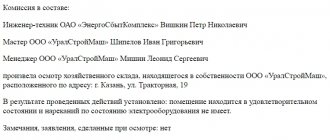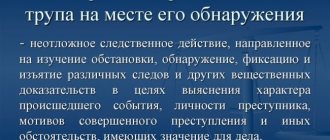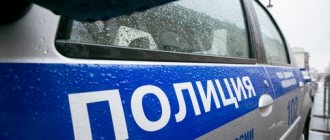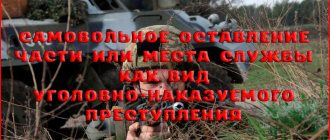Important! If you are handling your own theft case, you should remember that:
- Each case is unique and individual.
- Knowledge of the laws is desirable, but does not guarantee a solution to your particular problem .
- The possibility of a positive outcome depends on many factors .
Get a free consultation with a lawyer with the support of the Ministry of Justice of the Russian Federation
When police receive a report of a theft, one of the key initial actions is to investigate the crime scene. The positive result of the search for the criminal and the stolen items or money largely depends on the timeliness and correctness of this procedural event.
Forensic characteristics of burglaries
When qualifying theft from apartments or other residential premises, the general and specific rules of Art. 158 of the Criminal Code of the Russian Federation. Theft is characterized by the following nuances:
- the offender will be punished even if the total amount of damage does not exceed 2,500 rubles (for a smaller amount, punishment is applied only under the Code of Administrative Offenses of the Russian Federation);
- the degree of punishment is influenced by the method of theft, as well as the amount of damage caused;
- the value of valuables or the amount of stolen money is determined based on the results of forensic examinations;
- To correctly qualify residential burglary, a gradation of the amount of damage is used according to one of the parts of Art. 158 of the Criminal Code of the Russian Federation - significant, large and especially large.
The item could be any movable property or money to which the offender had no legal right. For example, if one’s own things that are temporarily in the possession of other persons are secretly stolen, liability will arise not for theft, but for other illegal actions (for example, arbitrariness). Likewise, if items or money were stolen by a tenant who has a legal right to enter and reside in the apartment, there will be no indication of a break-in or unlawful entry.
Secret theft of valuables or money from citizens’ homes will be considered under Part 3 of Art. 158 of the Criminal Code of the Russian Federation. The maximum penalty for such an offense will be imprisonment for a term of up to six years. At the same time, the method of entering an apartment or private house does not have any legal significance; for liability to occur, it is important to prove that the criminal does not have the legal right to enter the premises.
The situation in which burglaries occurred
Since the corpus delicti implies the secret nature of the thief’s actions, the moment of the theft can only be determined by accident or after a long time:
- traces of breaking into doors or windows may be noticed by random witnesses or neighbors in the entrance;
- You can discover the loss after returning from vacation or a long departure;
- An alarm may sound if the facility is armed.
A professional criminal may not leave obvious signs of a break-in by using key impressions, unlocked windows and vents, etc. With such actions, the fact of theft may not be established even when the owner returns to the apartment.
Let us highlight the characteristic features of theft from residential premises:
- the criminal makes preliminary preparations - establishes the period of departure or absence of the owners from the apartment, finds out whether the residents have potentially expensive equipment, valuables or a large sum of money;
- at the moment of entering an apartment and leaving the crime scene, the thief is most vulnerable, therefore the theft occurs during the daytime (when most citizens and neighbors are at work) or at night;
- The help of accomplices is often used - while the thief enters a residential area, accomplices distract the attention of bystanders or signal the danger of detection.
The above circumstances will be established during the investigation. Even if there are no witnesses, neighbors or passersby can talk about increased attention to the apartment or its owners, as well as suspicious actions of strangers.
Typical signs of burglary
The fact of entry into a residential area and removal of valuables or money can be detected by both the owner of the apartment and a random witness (neighbor, acquaintance, relative, etc.). Typical signs of burglary are:
- open doors with or without traces of locks being broken, the door leaf being pressed out;
- broken windows or vents, broken doors;
- scattered things or other traces of the criminal’s departure.
If visible traces of a crime are found, it is not recommended to enter the residential premises on your own. In this case, you may encounter a criminal, which will result in harm to health, or there is a possibility of losing important evidence for the investigation. In addition, a citizen who discovers the fact of a break-in in a residential premises may be accused of committing a crime if he decided to enter the apartment and left his traces.
In these cases, it is better to immediately contact law enforcement officers and tell them about a possible crime. Such oral or written reports will not be considered a false report, even if the theft is not confirmed.
To get the most detailed advice on your issue, you just need to follow any of the suggested options:
|
inspection of the scene of the incident
PROTOCOL
Minsk January 15, 2012
The inspection began at 12:30 p.m.
finished at 13:10
Investigator of the Pervomaisky Minsk district department of the Investigative Committee of the Republic of Belarus, captain of justice V.V. Morozov, in connection with the received statement of a crime from citizen Smirnova L.I., with the participation of the owner of the residential premises Smirnova L.I. , specialist expert-criminologist of the ECO Department of Internal Affairs of the Administration of the Pervomaisky District of Minsk, police captain Ilya Vladimirovich Khodarenko and witnesses Ivan Yurievich Buko, born in 1989. residing at the address: Minsk st. Aerodromnaya, no. 13 and Alexey Aleksandrovich Kovalev, born in 1989, living at the address: Minsk, st. Aerodromnaya 14, in compliance with the requirements of Articles 203 and 204 of the Code of Criminal Procedure of the Republic of Belarus, inspected a residential building at the address: Minsk st. Knorina, 17.
Before starting the inspection in accordance with the requirements of Art. Art. 193 and 194 of the Code of Criminal Procedure of the Republic of Belarus, it was explained to all those present that they have the right to draw the attention of the person performing the procedural action to everything that, in their opinion, may help identify the circumstances of the criminal case, as well as make comments to be entered into the protocol.
The specialist, in addition, in accordance with the requirements of Art. 200 of the Code of Criminal Procedure of the Republic of Belarus explains the purpose of his summons, the rights and obligations provided for in Art. 62 of the Code of Criminal Procedure of the Republic of Belarus.
It was explained to the attesting witnesses what investigative action they are participating in, its purpose, who is in charge and who is participating in its conduct, the rights and obligations provided for in Art. 64 of the Code of Criminal Procedure of the Republic of Belarus.
In addition, all of these persons have been warned of criminal liability in accordance with Art. 407 of the Criminal Code of the Republic of Belarus for disclosing preliminary investigation data without the permission of the investigator.
Before the inspection begins, all participants are informed that during the inspection, in order to record traces of a crime, photography will be used with a Canon F-680Sh camera, a 4 GB microSD flash card, and scientific and technical means of detecting and recording traces of a crime.
| Residential owner | L.I. Smirnova |
| specialist | I.V. Khodarenko |
| witnesses | I.Yu. Buko |
| A.A. Kovalev |
The inspection was carried out under the following conditions: in the apartment - with electric lighting and an air temperature of +20 C, outdoors - in cloudy weather, natural light and an air temperature of -8 C.
Inspection established:
The house is brick, one-story. The house is surrounded by a wooden fence 2 meters high. The gate is locked with a metal hook. On the porch, near the front door, 20 centimeters from the right railing and 86 centimeters from the left railing, a hatchet for chopping meat was found. The hatchet blade is metal, the handle is plastic. The length of the hatchet is 34.2 centimeters. The handle has a large number of shallow scratches, the largest of which is 7 millimeters. A visual inspection of the hatchet in oblique light revealed that on the handle, 2 centimeters from the bottom of the handle, there is a faintly visible trace of a capillary pattern. To identify this trace, the surface of the hatchet handle was treated with a magnetic brush using iron powder reduced with hydrogen. The footprint has an oval shape and dimensions 12x33 mm. The trail was photographed using a Canon F-680Sh digital camera with a scale bar. The trace was copied onto dark dactyl film measuring 20x40 mm. The dacteal film is placed in a paper envelope, sealed with the seal No. 4 of the Pervomaisky District Department of Internal Affairs and sealed with the signatures of witnesses. The hatchet was seized and packed in a cardboard box sealed with the seal No. 4 of the Pervomaisky District Department of Internal Affairs and sealed with the signatures of witnesses. The front door is wooden, painted white, and opens outwards. On the outside, on the mortise lock at a height of 120 cm and at a distance of 4 cm from the right side edge of the door, a volumetric trace of a triangular shape with sides 2.4x1x3 mm was found. The sharper corner is pressed to a depth of 3 mm and faces the bottom of the door. The bottom of the track is smooth, slightly covered with a brownish substance resembling rust. The lock is in poor condition. The trace was photographed with a Canon F-680Sh digital camera with a scale ruler, then it was separated from a part of the door by cutting out and packed in a cardboard box sealed with the seal No. 4 of the Pervomaisky District Department of Internal Affairs and sealed with the signatures of witnesses.
The house has two rooms, a kitchen and a bathroom. The doors of all rooms open onto a common corridor. In the hallway on the right there is a built-in wardrobe. On the left is a hanger on which hangs a gray women's coat. In the first room, located on the right side of the corridor, there is the room of the victim L.I. Smirnova. The room measures 2.3x3 m. The door in the room opens onto the corridor, there is one window overlooking the land adjacent to the house. The room has one double bed located near the window, a bedside table located next to the bed, and a chest of drawers on the right side of the front door. L.I. Smirnova’s personal belongings are scattered on the floor in the room. Dry splashes of a brown substance similar to blood in the shape of exclamation marks with upper rounded ends and lower sharp-angled ends were found on the floor. The edges of the splashes are smooth. The splashes are located in an area measuring 25x30 cm. This area is located at a distance of 25 cm from the bed and 48 cm from the front door. The largest mark is 2.4 mm long and 0.3 mm wide, the smallest mark is 0.7 mm long and 0.2 mm wide. A brown substance was scraped from the two largest traces, it was placed in a test tube, which was closed with a rubber stopper, packed in a paper envelope sealed with seal No. 4 and sealed with the signatures of witnesses.
The room of the victim's daughter, Daria, measures 2x3 m, the door opens into the corridor, there is one window facing the street. Knorina. In the room there is a bed near the window; opposite the bed there is a wooden wardrobe with mirror inserts. There is a carpet on the floor with a flower depicted on it consisting of seven petals of different colors. The order and furnishings in the room are not disturbed.
Kitchen size 1.5x3. The door opens into the corridor. On the right side of the entrance door there is an Indesit refrigerator; in the center of the kitchen there is a dining set consisting of a table with a round top and four stools. The order and furnishings in the room are not disturbed.
During the inspection, photographs were taken with a Canon F-680Sh camera.
The following were recovered from the scene:
– a hatchet packed in cardboard box No. 1;
– dactyl film with a trace of a capillary pattern, packed in envelope No. 2;
– scraping of brown substances, packed in envelope No. 3;
– a section of the door with traces of breaking into package No. 4;
Everything discovered and seized during the inspection was presented to the persons indicated above and placed in bags and envelopes.
All packages and envelopes are sealed with seal No. 4 for packages of the Pervomaisky District Department of Internal Affairs of Minsk. Explanatory notes were made on them, as well as signatures of the investigator, specialists, and witnesses.
The packages and envelopes were taken to the Pervomaisky district police department in Minsk.
The protocol was read aloud by the investigator, everything was written down correctly. We have no statements or comments.
| Residential owner | L.I. Smirnova |
| specialist | I.V. Khodarenko |
| witnesses | I.Yu. Buko |
| Investigator Captain of Justice | A.A. Kovalev V.V. Morozov |
Protocol for Inspection of the Scene of Incident in Theft Cases
Inspection of the scene of the incident is one of the mandatory operational-search actions after receiving a statement from the victim. Police officers are given three days to conduct a pre-investigation check, and an inspection of the apartment will allow them to record many traces of the crime and evidence in the criminal case.
The following circumstances are established:
- method of entering the premises and leaving with stolen things;
- possible instruments of crime with the help of which the break-in occurs - a master key, original or duplicate keys, an ax, a crowbar, etc.;
- data on the number of attackers, their professional criminal skills, gender and age characteristics;
- information about stolen items or funds - the value of the property and the amount of money, a list of stolen items, etc.;
- time of entry into the apartment and theft;
- other circumstances that will be important for the investigation of the case.
Note!
During the pre-investigation check, the fact of the crime itself is established. To do this, a circle of people who had access to the home and knew about the presence of valuables and funds is determined.
Also, when inspecting the scene of the incident, the fact of a possible staged theft will be checked (for example, to conceal the embezzlement of funds or for other reasons).
The results are recorded in the procedural protocol, which will serve as evidence in the case. It reflects the following circumstances:
- grounds for conducting an inspection - a report of a crime, a criminal case, etc.;
- composition of persons participating in the procedural event, including witnesses, witnesses and the victim;
- crime scene diagram;
- a list of stolen property according to the victim (the composition of the stolen items will be confirmed during the investigation);
- identified traces of a crime - fingerprints, an opened safe, scattered items, etc.
Specialized examinations will also be assigned to establish the nature and method of entry into the home, the identity of the criminal, and determine the amount of damage. Each participant has the right to make comments and objections to the protocol, and to draw the attention of police officers to certain facts.
Simultaneously with the inspection, an interview is carried out with the victim, witnesses and other persons who may know the circumstances of the theft, and possible changes in the situation at the scene that occurred before the arrival of the police officers are established.
List of sources used
Regulatory acts:
- Constitution of the Russian Federation // Rossiyskaya Gazeta. 1993. December 25
- Code of the Russian Federation on Administrative Offenses dated December 30, 2001 No. 195 - Federal Law (as amended on March 21, 2005) // SZ RF. 2002. No. 1 (Part 1). Art.1
- Criminal Code of the Russian Federation dated June 13, 1996 No. 63 - Federal Law (as amended on December 28, 2004) // SZ RF. 1996. No. 25. Article 2954
- Criminal Procedure Code of the Russian Federation of May 29, 2002 No. 59-FZ //NWRF. 2002. No. 22.
- Federal Law of December 30, 2006 N 283-FZ “On Amendments to the Criminal Code of the Russian Federation and Article 151 of the Criminal Procedure Code of the Russian Federation” // Rossiyskaya Gazeta, N 1, 01/10/2007
- Order of the Ministry of Internal Affairs of the Russian Federation dated April 18, 1998 No. 334 DSP “On the interaction of services in the conduct of certain investigative actions” // Special. Library of the Ministry of Internal Affairs of the Russian Federation. 1998.
"Key" moments
When conducting an inspection of the scene of an apartment burglary, special attention is paid to the “key” moments - the method of entry into the residential premises and the departure of the criminal with stolen things. Let us highlight the following nuances of these actions:
- the list of persons who had access to the apartment, keys to it, etc. is specified. — often theft occurs by close people or relatives who fake the fact of a break-in;
- traces of the criminal’s behavior in the apartment - knowledge of the possible features of locks or security devices may indicate preliminary preparation;
- traces of a break-in left behind;
- characteristic traces of tools used for illegal entry.
The listed circumstances will not only allow us to describe the location and fact of the crime in as much detail as possible, but will also help identify the criminal. The database of the Ministry of Internal Affairs and investigative bodies contains information about previously committed crimes with a similar “handwriting”, which makes it possible to combine investigations into several criminal cases.
If there are no obvious signs of a break-in, the most likely methods of entry into the apartment and escape of the criminal are established. Attention is drawn to unlocked windows, balcony doors, etc. The police also check the persons who had the keys to the apartment doors - it is not difficult for an experienced criminal to duplicate them.
Note!
Only if all the circumstances of penetration into a residential premises are established, the criminal is liable under Part 3 of Art. 158 of the Criminal Code of the Russian Federation.
Failure to prove the fact of a break-in or the presence of contradictions in the crime scene inspection protocol entails the recognition of procedural evidence as inadmissible, and the thief will be held accountable under the milder part of Art. 158 of the Criminal Code of the Russian Federation.
What else should you pay attention to?
In addition to establishing all the circumstances of the burglary, the attention of the investigative authorities will be directed to the following actions:
- establishing the reliability of information, the list of stolen items and the amount of money - often victims stage the theft, or dishonestly inflate the amount of damage caused;
- Residents of nearby houses or neighbors at the entrance are interviewed - they are the ones who can provide the necessary information about suspicious persons at the scene of the crime;
- possible options for concealing stolen property are determined - if a significant number of things are stolen, criminals can hide some of them in basements, cars or other places of temporary storage;
- a visit is made to nearby retail outlets or public buildings where video recording cameras may be installed (camera recordings are confiscated and protocols are drawn up, after which they will be used as evidence in the case);
- the circle of persons potentially related to the theft is determined - in this case, data from local police officers who have information about criminal elements in a residential building or block is used;
- places of sale are checked - pawn shops, private buyers of stolen goods, etc.
The more detailed and thorough the initial investigative actions are carried out, including inspection of the crime scene, the greater the chances of finding the thief “without delay” and returning the stolen property or money to the victim. Any violations committed during the inspection or recording its results in the procedural protocol will be used by the lawyer of the suspect to exclude evidence from the case file and acquit the criminal.
ATTENTION!
Due to recent changes in legislation, the information in this article may be out of date!
Our lawyer will advise you free of charge - write in the form below.
Information contained in the protocol
During the inspection of the scene of the incident, it is necessary to solve a certain range of practical goals and objectives, which are included in the protocol. Among them are:
- how the thief entered and left the premises: are there any signs of forced entry into the premises or was a key used, etc.;
- what weapons he used to penetrate;
- whether the offender acted alone or as part of a group;
- collecting information about a criminal or a group of people: their gender, age, etc.;
- drawing up an inventory of the stolen property;
- is there evidence that the criminal knew about the location of the valuables;
- were there any negative circumstances that confirm the staging of the theft (for example, to conceal another crime, accuse an innocent person of theft, or to send the investigative team on a false trail);
- time of the theft (if the exact time could not be determined, then the estimated time range is indicated).
The investigator who is authorized to conduct the theft case is responsible for preparing the protocol.
The information contained in the document must meet the principles of reliability and comparability.
An important step is to search for traces of the criminal : fingerprints or teeth, clothing, traces of burglary tools or shoes, personal belongings forgotten by him, etc. For this, the behavior of criminals in the room is modeled.
A special feature of the theft protocol is the mandatory presence of the owner of the apartment or non-residential premises or the tenant. They must assess what has changed in the environment of the premises after the theft and point out missing valuables. Adjacent premises and surrounding areas are also inspected. After all, thefts are rarely committed without vehicles; here you can find traces of tires or discover footprints or cigarette butts.
If there are unwitting witnesses to the theft, then specialists draw up an identikit of the criminal. They are also offered photo albums for identification, which contain photos of persons registered for similar crimes.










